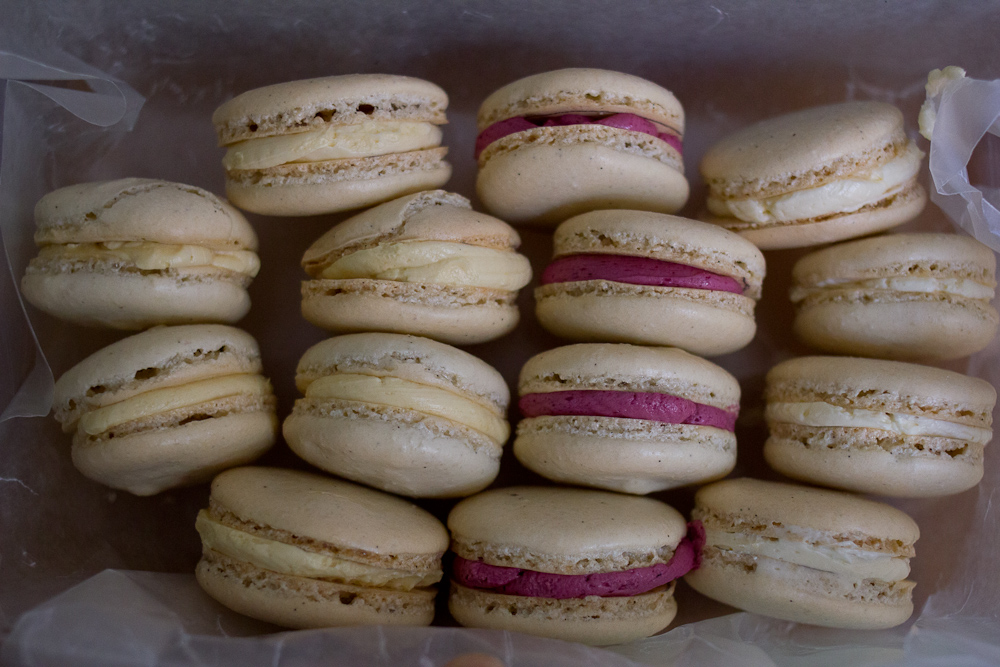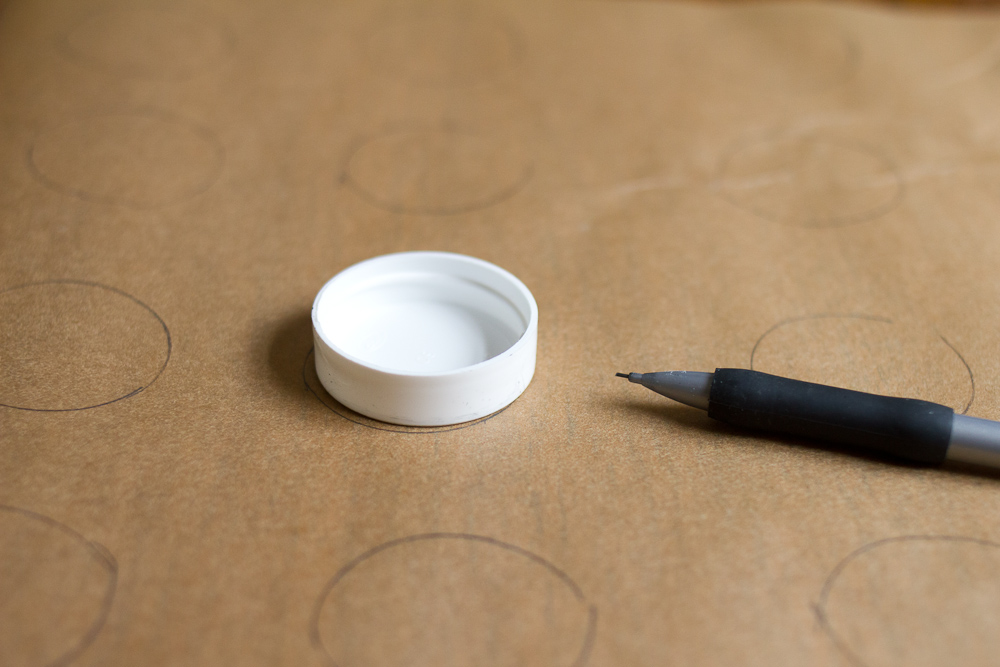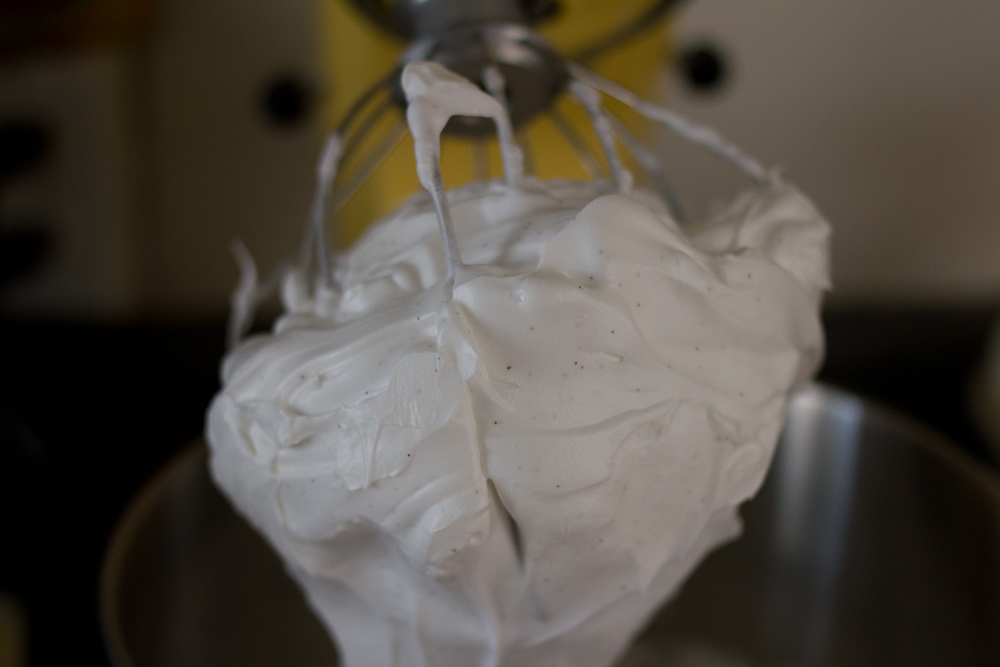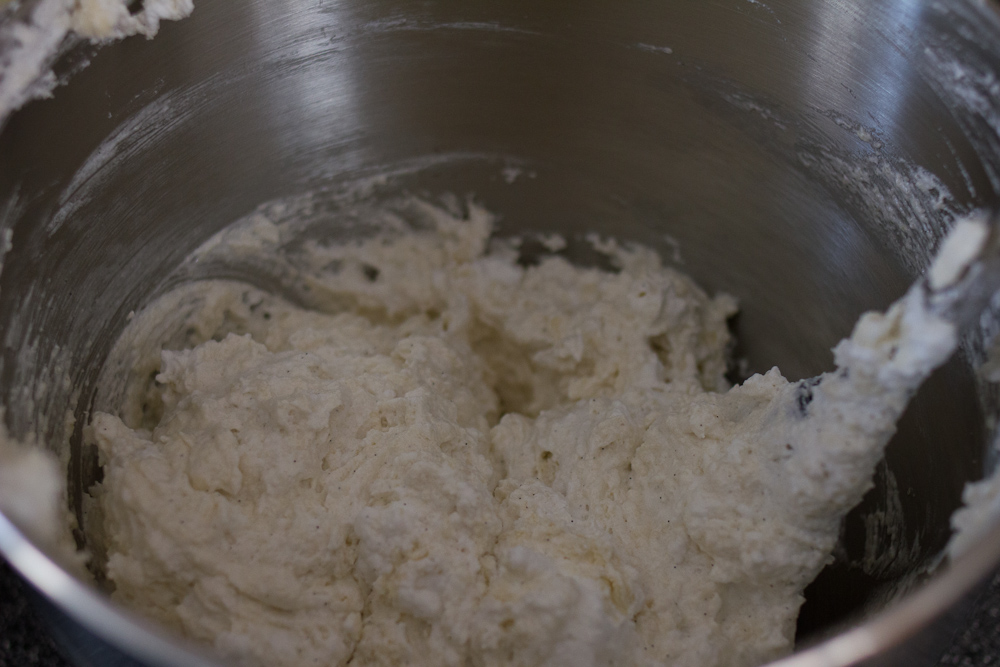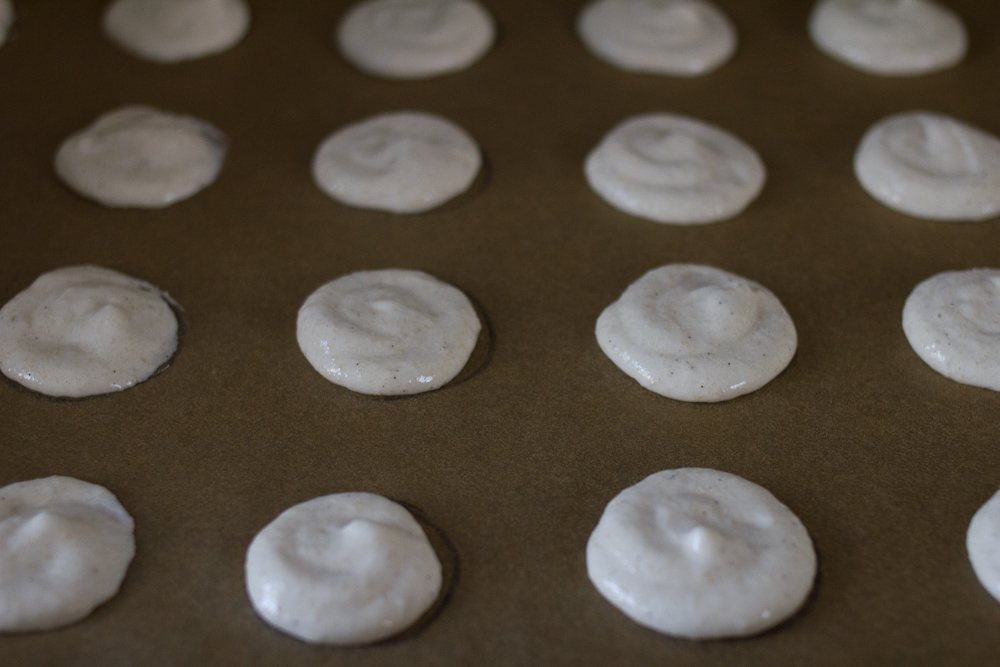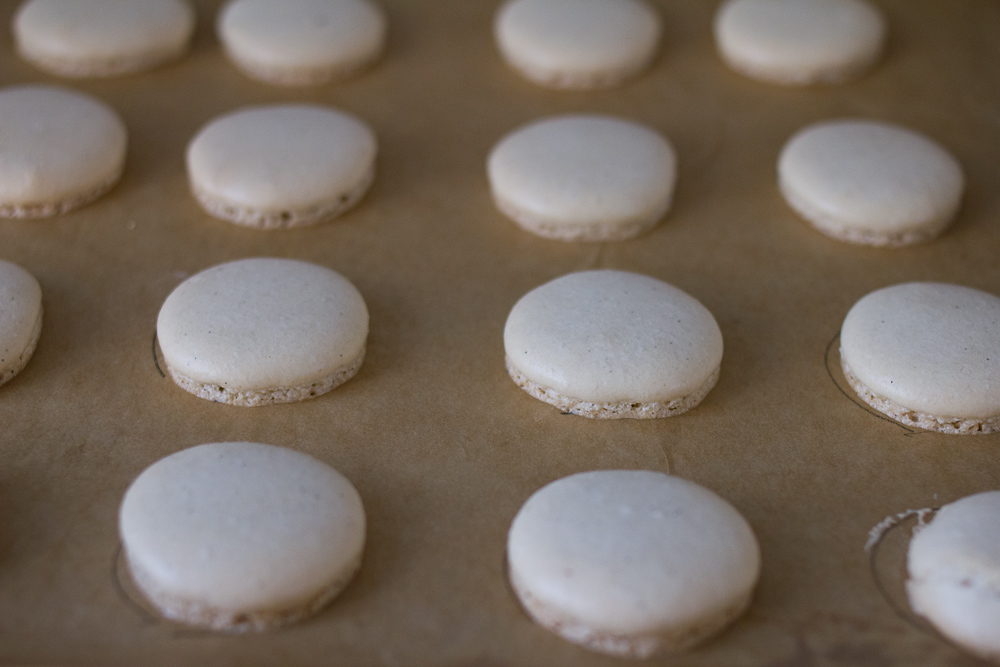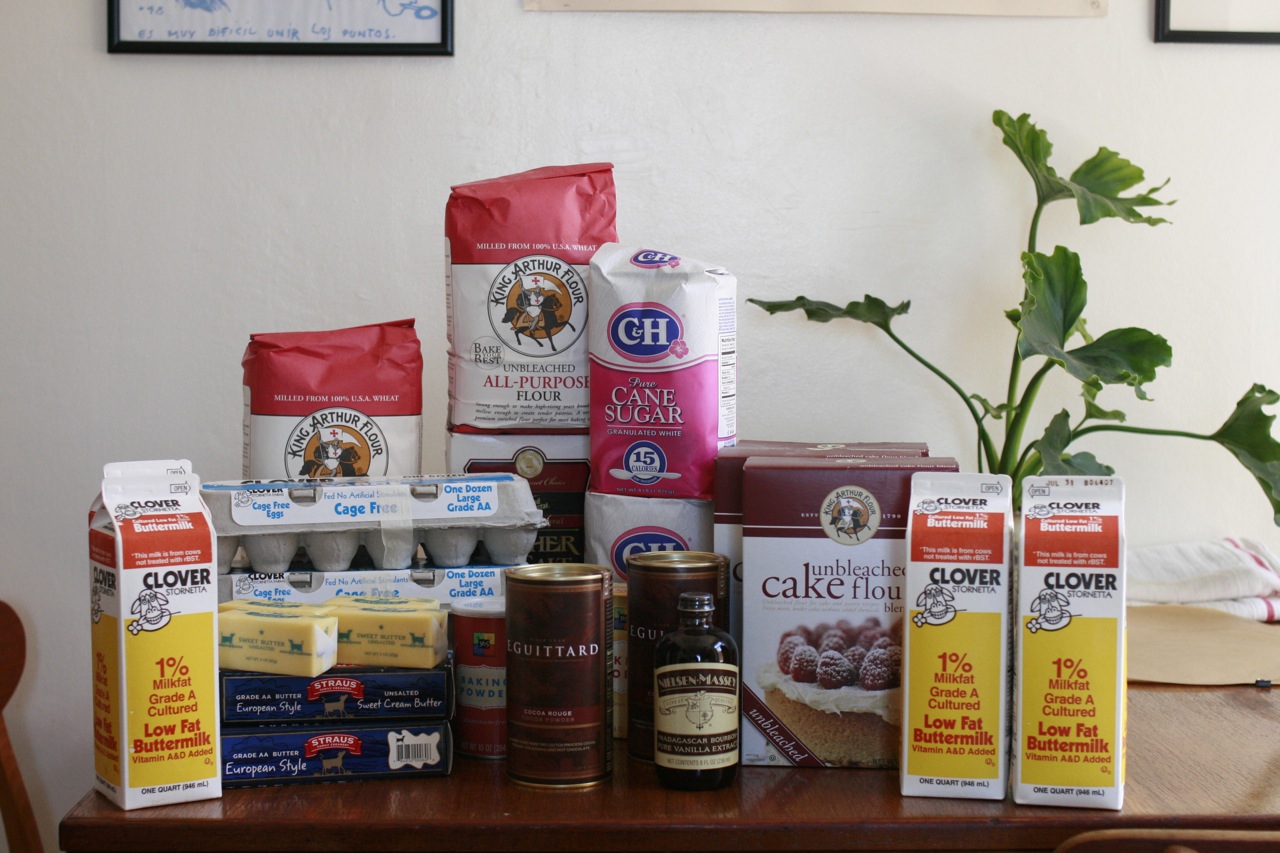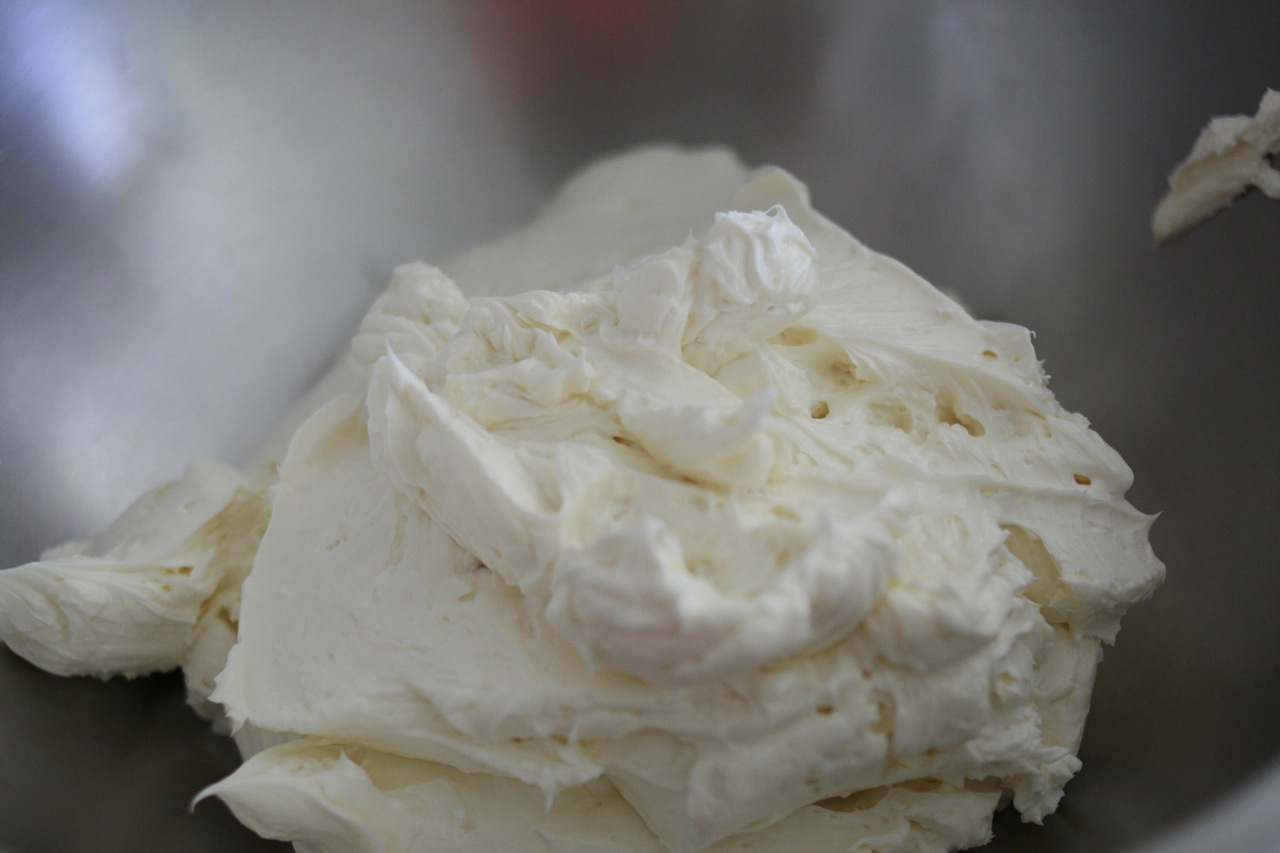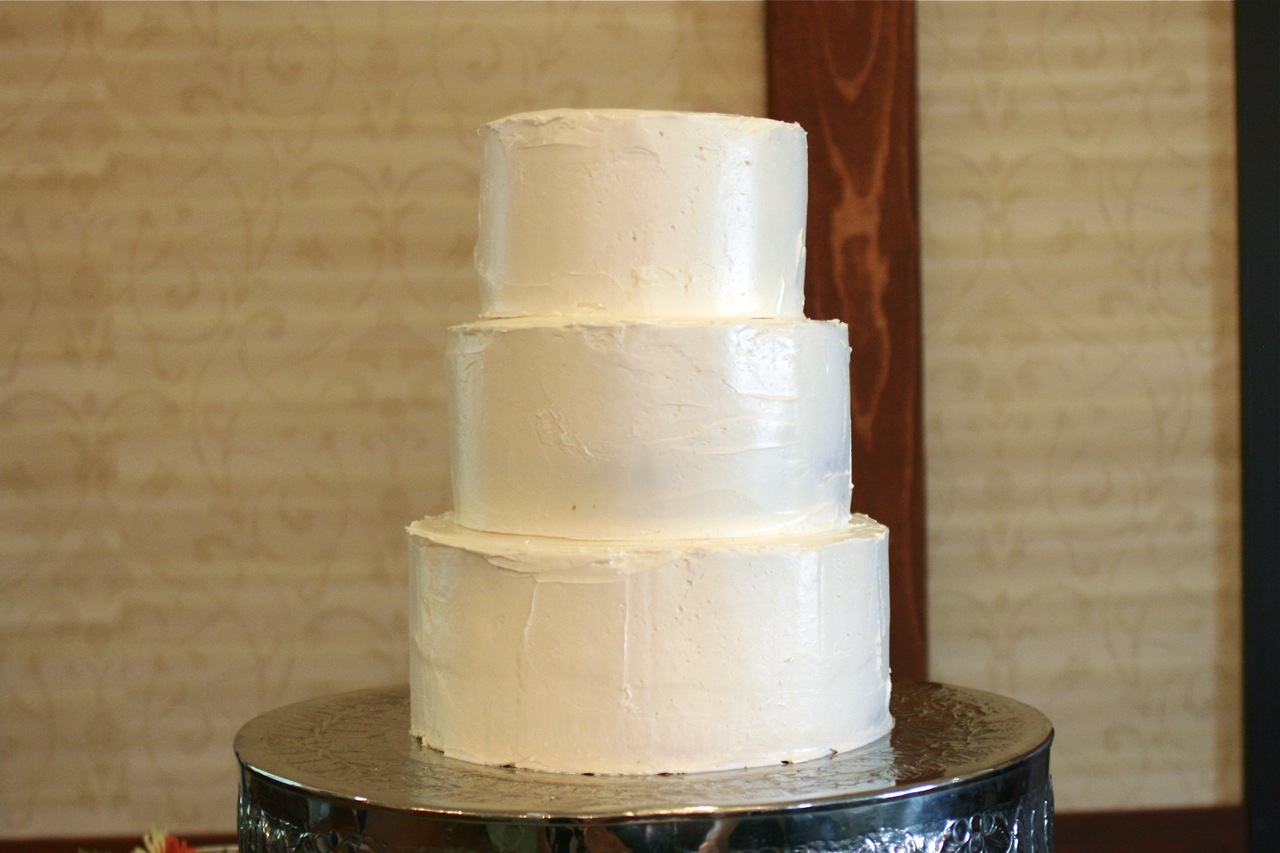I’m the type who likes projects. While I enjoy cooking dinner each night for my little family and our friends, what really gets me excited is a new project. I like the research phase at the start of a project and the challenge of stepping up my game and out of my comfort zone. And I love the satisfaction of making something I’ve never made before, especially if it turns out right. I also love losing myself in a project, letting my worries slip away for a few hours and focusing in on the task at hand. It’s why I started cooking in the first place and probably why I’ll never stop. These projects are freeing for an overactive worrier like myself. My mind gets a break, and in the end, I usually have something delicious to show for it.
I decided to try my hand at french macarons last weekend. I had a free day, no plans at all. After a pep talk from Jordan the day before, it was settled and the research commenced. I read lots of recipes, read horror stories of macarons gone awry, read encouraging posts assuring me that it wasn’t nearly as hard as everyone claimed.
I’m happy to say, this will be one of those encouraging posts. It really is not as hard as you’d expect. Yes, precision is necessary and some understanding of a few key techniques is helpful, but if you’re mindful, you can make perfect a french marcaron the first go round.
The recipe I used is from a wonderful pastry blog Brave Tart. I’m positive her recipe and tips are the reason my macarons were a success the first time around. Thank you Stella!
French Macaron with Vanilla, Passionfruit or Blackberry Buttercream, adapted from Brave Tart
For the cookies
4 oz | 115 grams almond meal or almond flour (you can also grind blanched almonds in a food processor until powdery)
8 oz | 230 grams powdered sugar
5 oz | 144 grams egg whites
2.5 oz | 72 grams sugar
1/2 teaspoon | 2 grams kosher salt
the scrapings of 1 vanilla bean or 2 teaspoons vanilla extract
First, before we get into how to make the recipe, let’s talk about measuring the ingredients. Measurements by volume (cups, teaspoons, etc) are a bad idea for delicate pastry. Really, we all should always bake by weight and never volume because there can be such huge discrepancies between how each person measures one cup. There are also other intervening factors like humidity that can throw volume measurements off. So save yourself some macaron grief, and get a kitchen scale. Measuring ingredients by weight is not only more accurate, but I’m sure you’ll find that it is actually faster and easier.
Preheat your oven to 300 degrees. If you have an oven thermometer, put it in the oven to double check the temperature. If your oven is too hot, your cookies will cook unevenly or their shells will crack and crumble as they rise. Move both racks towards the center of your oven to ensure the cookies get the most even heat. See what I mean about precision? Not overwhelmingly difficult, but necessary.
Line baking sheets with parchment paper. I traced 1.5″ circles on my parchment paper so that I would have something to trace when I piped the cookies onto the sheet. It’s important that the cookie shells are all about the same size because you sandwich two together.
Insert a plain round tip into a pastry bag. This is for piping the macarons onto the baking sheet. Here are some great tips on how to easily fill a pastry bag if the task seems daunting.
Sift together the almond flour and powdered sugar into a medium bowl. You’ll have a spoonful or two of little almond granules that are larger than the rest and don’t sift through, just discard those. Separate your egg whites from the yolks. Put your yolks in the fridge and save them to make pastry cream for a raspberry napoleon.
In the bowl of your mixer, combine egg whites, sugar, vanilla bean (not the extract if you’re using that) and salt. Mix on medium power (4 on a Kitchen Aid) for three minutes.
Increase the speed to medium-high (7 on Kitchen Aid) and whip for another three minutes.
Increase the speed to high (8 on Kitchen Aid) and whip for another three minutes. Turn the mixer off and add any extracts or colors here. Whip on high for another minute to incorporate. The mixture should look like a very stiff, dry meringue and should clump inside the whisk. If it isn’t very stiff, beat for another minute or two until it is. Aren’t the vanilla bean flecks just the cutest!
Add the almond flour and powdered sugar to the meringue. Using a large spatula, fold the dry ingredients into the meringue. It will take quite a while to fully incorporate. The purpose of this step is to deflate the meringue so don’t worry about knocking it around a little bit.
Stella’s recipe was astoundingly accurate for me. She said it would take about 40 folds to incorporate the dry ingredients into the wet and get a good batter consistency and she was right. You want a batter that is thin enough to pipe, but not so thin it runs all over the baking sheet. She describes the texture as “molten” if that helps you. Mixing the ingredients thoroughly is important so be sure to scrape the sides the bowl several times while mixing. Streaks of unmixed meringue could also cause your cookies to crack in the oven.
Once your batter is mixed, spoon it into a pastry bag. I’d recommend you only fill the bag about two-thirds full and then tie the top with a rubber band. Make the piping easier on yourself, don’t overstuff the bag! With a 10″ pastry bag, I only had to refill twice. Not bad.
Pipe small circles onto your parchment lined baking sheet. Let the cookies sit for a few minutes on the counter to settle. Rap the trays hard on the counter several times. Don’t be shy about it. This removes the air bubbles that could also cause your shells to crack in the oven. I didn’t rap my first batch with quite enough vigor and most of my cookies came out with cracked shells. While cracked shells do nothing to harm the flavor, take this easy step to avoid them. For my second batch, I hit the tray hard against the counter about 10 times taking care to rotate it 90 degrees for a few of the raps and the shells came out perfectly.
Bake the cookies at 300 degrees for 18 minutes. You should be able to peel the parchment away from the macaron without tearing out the center of the cookie. I’d test on a corner cookie before removing the sheet from the oven. Remove the cookies the oven and let them cool on the trays. Use a metal spatula to detach the cookies from the parchment after they are completely cooled.
Below you can see the difference between a perfect shell and a cracked shell. The top of the cracked shell will sort of crumble and collapse when you fill it with cream, while the good shell will remain intact. Both are delicious though so don’t dispair if your shells crack!
Once cooled, fill the macarons with the buttercream of your choice. I did vanilla, passionfruit and blackberry. All were divine!
For the filling
1/2 cup sugar
2 large egg whites
12 tablespoons butter, softened
1 teaspoon vanilla extract
a pinch of salt
3 tablespoons passionfruit syrup (mine was made from 4 oz of frozen passionfruit pulp and 1/2 cup sugar simmered together for 30 minutes and strained)
3 tablespoons blackberry syrup (mine was made from 4 oz of frozen blackberries and 1/2 cup sugar simmered together for 30 minutes and strained of the seeds)
In a bowl over a pot of simmering water, combine the sugar and egg whites. Heat the egg and sugar mixture until you cannot feel the sugar granules when you rub the mixture between your fingers. Transfer mixture into the mixer and whip until it turns white and about doubles in size. Add the vanilla. Finally, add the butter a few tablespoons at a time and whip, whip, whip. It will look like your buttercream is ruined for a few minutes. Don’t dispair! It will come together if you just keep whipping.
Once the buttercream is has been whipped into submission, put two thirds of it another bowl. To the remaining third, add the 3 tablespoons of blackberry syrup. Whip, whip, whip again until the syrup is incorporated. Remove that from the mixer, wash the bowl and whisk and then add another 1/3 of the frosting. Add 3 tablespoons of passionfruit syrup and whip whip whip!
Put the filling in a disposable pastry bag with a round tip. Pipe about a teaspoon of filling onto the flat side of the macaron cookie. Sandwich the cream between another cookie. Continue with the rest of the cookies, alternating fillings if you’d like.
The surprisingly truth about macarons? They only get more tasty as they age. While they are delicious the first day, they are insanely good on the second and third days once the cream and cookie have really melded together and become one. Store your cookies in a tupperware in the refrigerator, but let set them out for about an hour before serving to let the buttercream warm up a bit before you eat them. The texture is even more pleasant when you let them warm a bit.
I am absolutely stoked with how these came out. They were delicious—sweet but not overwhelmingly so. Their texture was incredible—a crunchy exterior that shatters when you bite into it revealing a creamy, chewy interior. The passionfruit filling was positively addicting. Plus they are adorable. I’ll be making them again very soon.
-Emily
